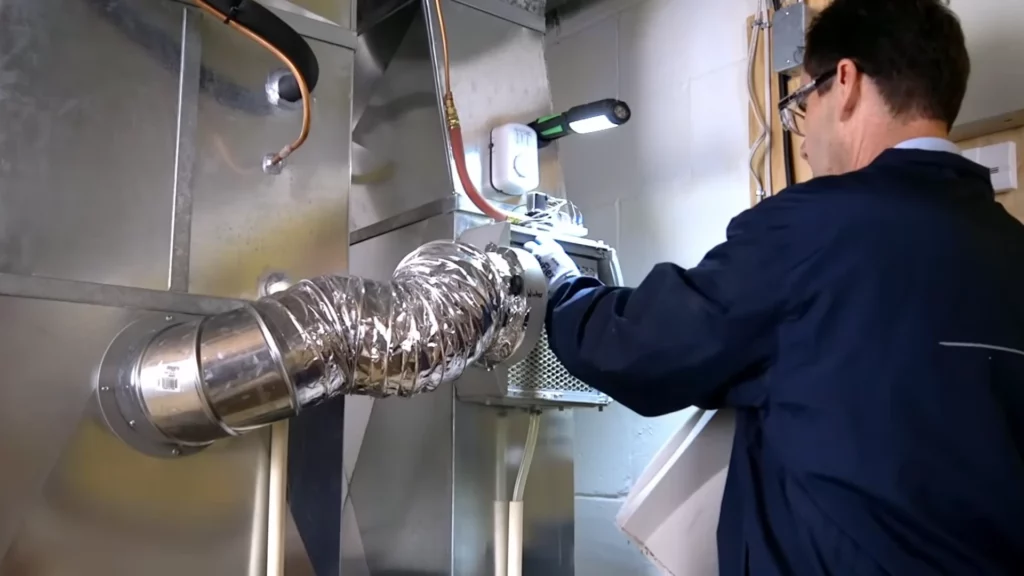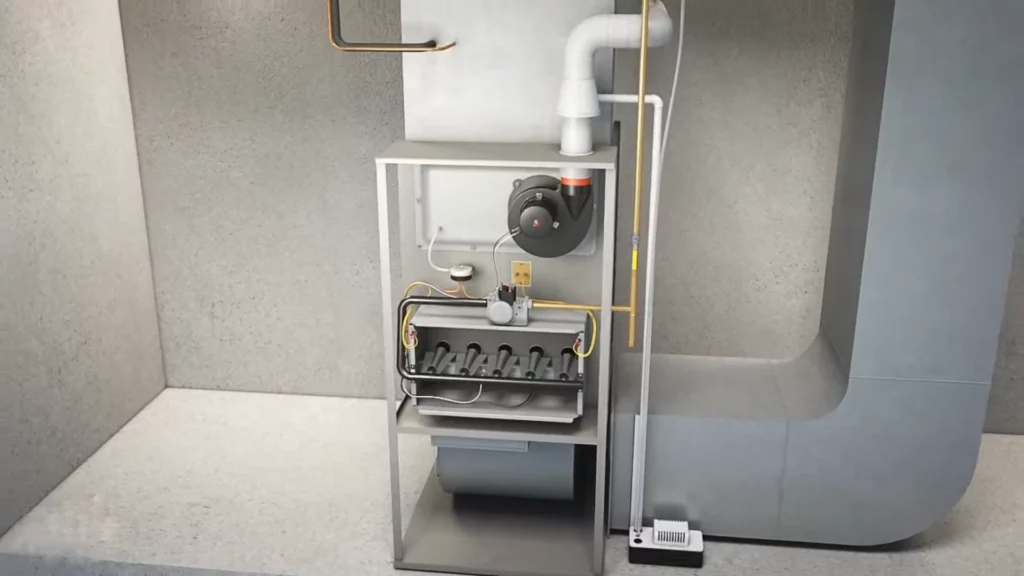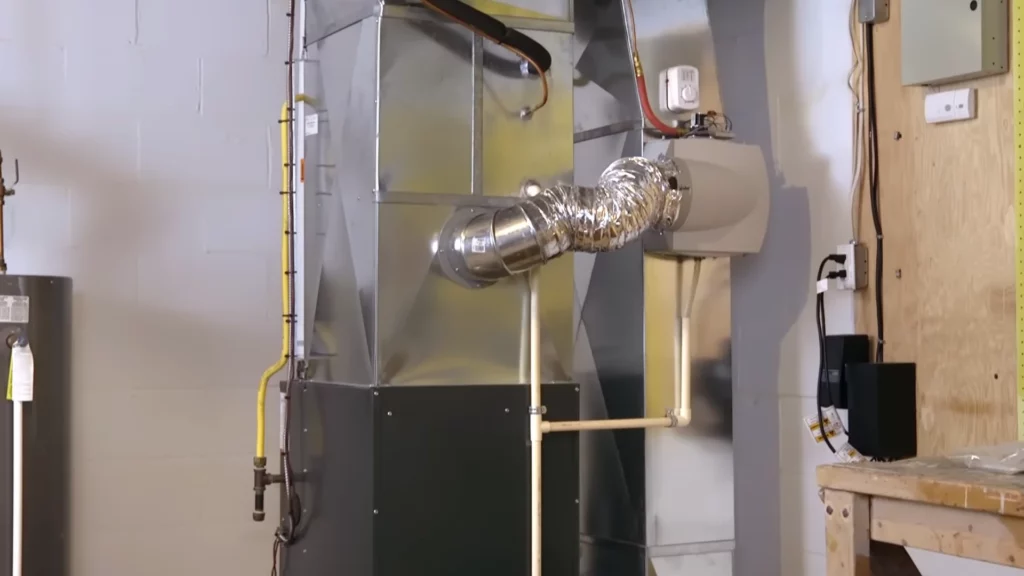How Much Electricity Does Gas Furnace Use
Gas furnaces are a cornerstone of residential heating in many regions. While they primarily run on gas, there's often a question lingering in the minds of homeowners: “How much electricity does gas furnace use?” The answer is not straightforward, as it depends on various factors. Gas furnaces need electricity to power certain components, which are crucial for their operation. This guide aims to demystify the electricity usage of gas furnaces, offering a comprehensive look into how these systems work and how you can manage their electricity consumption efficiently.
The Role of Electricity in Gas Furnaces
Though the primary fuel source is gas, electricity plays several critical roles in a furnace's operation. It powers the blower motor, which circulates warm air throughout your home. The ignition system, which has replaced the older pilot light in modern furnaces, also runs on electricity. Additionally, the thermostat and control systems, which regulate the temperature and ensure efficient operation of the furnace, are powered by electricity. This multi-faceted use of electricity is essential for the efficient functioning of a gas furnace.
Factors Affecting Electricity Consumption in Gas Furnaces
Size and Efficiency of the Furnace
The size of your gas furnace can significantly impact the amount of electricity it uses. A larger furnace, while capable of heating a bigger area, may consume more electricity. Conversely, smaller furnaces might use less electricity but could be inadequate for heating larger spaces effectively. The efficiency of the furnace also plays a crucial role. Modern high-efficiency furnaces are designed to use less electricity. They often come with ECM (Electronically Commutated Motor) blower motors, which are more efficient than traditional motors.
Thermostat Settings
The settings on your thermostat can directly affect “how much electricity does gas furnace use”. Higher temperature settings will cause the furnace to run longer, increasing electricity usage. Conversely, lowering the thermostat by a few degrees can result in significant electricity savings over time.
Age and Maintenance of the Furnace
Older gas furnaces tend to be less efficient and might use more electricity. As furnaces age, their components, like the blower motor, can become less efficient, consuming more electricity. Regular maintenance is key to ensuring that your furnace operates efficiently. Neglected furnaces can develop issues that lead to increased electricity consumption, such as clogged filters or uncalibrated thermostats.
Calculating Electricity Usage of a Gas Furnace
Understanding the Energy Rating
To get a ballpark figure of “how much electricity does gas furnace use”, start by checking its energy rating. Furnaces come with documentation that often includes information about their electricity consumption, usually in watts or kilowatts.
Using a Wattage Meter
For a more accurate measurement, you can use a wattage meter. This device can be connected to your furnace, giving you a real-time reading of its electricity usage. This method provides the most precise answer to “how much electricity does gas furnace use” for your specific model.
Average Consumption Rates
On average, gas furnaces use between 600 to 800 watts. However, this can vary based on the factors mentioned earlier. During the ignition phase, the furnace might use more electricity, which then drops once the system is running.

Tips to Reduce Electricity Usage in Gas Furnaces
Optimize Thermostat Settings
One of the simplest ways to reduce the electricity usage of your gas furnace is by optimizing your thermostat settings. Setting the thermostat to a lower temperature during the night or when you're away can significantly reduce electricity usage. Programmable or smart thermostats can automate this process, adjusting temperatures based on your schedule.
Regular Maintenance
Regular maintenance is crucial for minimizing electricity usage. This includes cleaning or replacing air filters, ensuring the blower motor is functioning efficiently, and checking that the thermostat is accurately calibrated. Annual professional check-ups can prevent problems that might lead to increased electricity consumption.
Upgrade to a High-Efficiency Furnace
If your furnace is old and inefficient, consider upgrading to a newer, high-efficiency model. These furnaces are designed to use less electricity and gas, making them a more eco-friendly and cost-effective option in the long run.
The Impact of Regular Maintenance on Electricity Consumption
The Importance of Regular Check-Ups
Regular maintenance impacts not only the longevity of your furnace but also its electricity consumption. A well-maintained furnace operates more efficiently, using less electricity.
Components to Focus On
Key components that should be regularly checked include the blower motor, air filters, and thermostat. The blower motor should run smoothly without straining, as any obstruction can increase electricity usage. Clean air filters ensure proper airflow, reducing the strain on the furnace. A correctly calibrated thermostat ensures the furnace is not running more than necessary, which directly impacts electricity usage.
Comparing Gas Furnace Electricity Usage with Other Heating Systems
Gas Furnace vs. Electric Heater
When comparing “how much electricity does gas furnace use” with an electric heater, gas furnaces generally come out ahead in terms of lower electricity usage. Electric heaters convert electricity directly into heat, which can be more expensive depending on electricity rates in your area.
The Cost-Benefit Analysis
While gas furnaces might have a higher initial installation cost compared to electric heaters, they often offer a better cost-benefit ratio in the long run. The lower operating costs, due to less electricity usage, can offset the initial investment over time.
Read Also Our Post About Oil Furnace Electricity Use

FAQs About Gas Furnace Electricity Usage
- How does the electricity usage of a gas furnace compare to other household appliances?
- Gas furnaces generally use less electricity than many large appliances, such as electric water heaters or clothes dryers.
- Can a smart thermostat reduce the electricity usage of my gas furnace?
- Yes, smart thermostats can significantly reduce electricity usage by optimizing heating schedules and adjusting temperatures based on your habits and preferences.
- Is it more cost-effective to run a gas furnace or an electric heater?
- In most cases, running a gas furnace is more cost-effective than an electric heater, especially in regions with high electricity prices.
- How much electricity does a gas furnace use per day?
- The daily electricity usage of a gas furnace can vary based on factors such as the size of the furnace, thermostat settings, and the efficiency of the unit. On average, if a gas furnace uses about 600 to 800 watts, assuming it runs intermittently over a 24-hour period, it could consume approximately 14.4 to 19.2 kilowatt-hours (kWh) per day. However, this is a rough estimate and actual usage can differ based on individual heating needs and furnace specifications.
- How much electricity does a gas furnace use per month?
- To calculate the monthly electricity usage of a gas furnace, consider the daily usage and multiply it by the number of days in a month. Using the same average range of 600 to 800 watts and the daily usage estimate, a gas furnace could use approximately 432 to 576 kWh per month. Again, this is a general estimate and actual monthly electricity usage will depend on various factors including the specific furnace model, home insulation, and personal heating preferences.
Energy-Efficient Furnace Technologies
Emerging Innovations in Furnace Design
As technology advances, new innovations in gas furnace design are emerging, aimed at reducing electricity and gas consumption. One such innovation is modulating furnaces, which can adjust their flame and heat output more precisely, leading to more efficient energy use and reduced electricity consumption. These furnaces use advanced blower motors that can operate at varying speeds, optimizing energy use and improving comfort.
The Role of Smart Furnace Features
Smart features in gas furnaces are becoming increasingly common. These include Wi-Fi connectivity, allowing homeowners to control their furnace remotely, and advanced diagnostics, which help in identifying efficiency issues early on. These technologies not only enhance user convenience but also contribute to reducing electricity usage by optimizing furnace operation.
See Also Our Post About Electric Furnace Electricity Use
Impact of Home Insulation on Furnace Electricity Usage
The Significance of Proper Insulation
Home insulation plays a crucial role in determining “how much electricity does a gas furnace use”. Proper insulation helps in maintaining the desired temperature with less effort from the furnace, thereby reducing its run time and electricity usage. Insulating walls, roofs, and floors, as well as sealing drafts around doors and windows, can significantly reduce heat loss.
Strategies for Improved Home Insulation
Adding or upgrading insulation in key areas of the home can make a noticeable difference. This might include investing in double-glazed windows, adding insulation in the attic, or using insulating curtains. These measures complement the efficiency of a gas furnace, ensuring minimal electricity usage for optimal heating.
Environmental Impact of Gas Furnaces and Electricity Use
Gas Furnaces and Carbon Footprint
While gas furnaces are more efficient than many electric heaters, they still contribute to carbon emissions, both directly through gas combustion and indirectly through electricity use. Understanding “how much electric does a gas furnace use” is also important from an environmental perspective.
Sustainable Practices in Furnace Usage
To minimize the environmental impact, homeowners can adopt sustainable practices. This includes regular maintenance, using energy-efficient models, and integrating renewable energy sources like solar panels to offset electricity usage. Reducing the furnace’s electricity usage not only lowers utility bills but also contributes to a reduced carbon footprint.
Financial Implications of Furnace Electricity Usage
Analyzing Long-Term Costs
While considering “how much electricity does gas furnace use”, it's essential to think about long-term financial implications. Although energy-efficient furnaces might have a higher upfront cost, they can lead to significant savings on utility bills over time due to reduced electricity and gas usage.
Cost-Effective Heating Solutions
For homeowners, it's important to balance the initial investment with potential savings. This might involve choosing a furnace with the right size and efficiency rating for their home and considering additional investments like smart thermostats or home insulation upgrades to maximize savings.
Integration of Furnaces with Home Automation Systems
The Rise of Smart Homes
The integration of gas furnaces with home automation systems is a growing trend. These systems allow homeowners to control heating alongside other home functions like lighting and security, all from a single interface. This integration can lead to more efficient use of the furnace, reducing unnecessary electricity usage.
Advantages of Automated Heating Controls
Automated systems can optimize furnace operation based on real-time data, such as outside temperature and occupancy patterns. This means the furnace operates only when needed, ensuring “how much electricity does gas furnace use” is kept to a minimum, while maintaining comfort levels.
Seasonal Maintenance and Its Effect on Electricity Usage
Importance of Seasonal Tune-Ups
Seasonal maintenance is crucial for ensuring that a gas furnace operates efficiently throughout the year. A furnace that is well-maintained before the onset of winter is more likely to run efficiently, using less electricity.
Steps in Seasonal Furnace Maintenance
This includes cleaning and inspecting the heat exchanger, checking and sealing ductwork, testing furnace controls, and ensuring the blower motor is in optimal condition. Professional technicians can perform these tasks effectively, ensuring your furnace is ready for efficient operation in the colder months, minimizing “how much electricity does gas furnace use”.
How Much Electricity Does Gas Furnace Use: Conclusion
Understanding “how much electricity does gas furnace use” is crucial for homeowners looking to optimize their home's energy efficiency and reduce utility bills. While gas furnaces do require electricity, their consumption can be effectively managed through proper maintenance, efficient usage habits, and the use of modern, high-efficiency models. By considering the factors discussed in this guide, homeowners can enjoy a warm, cost-effective, and energy-efficient heating solution.
Sources:

